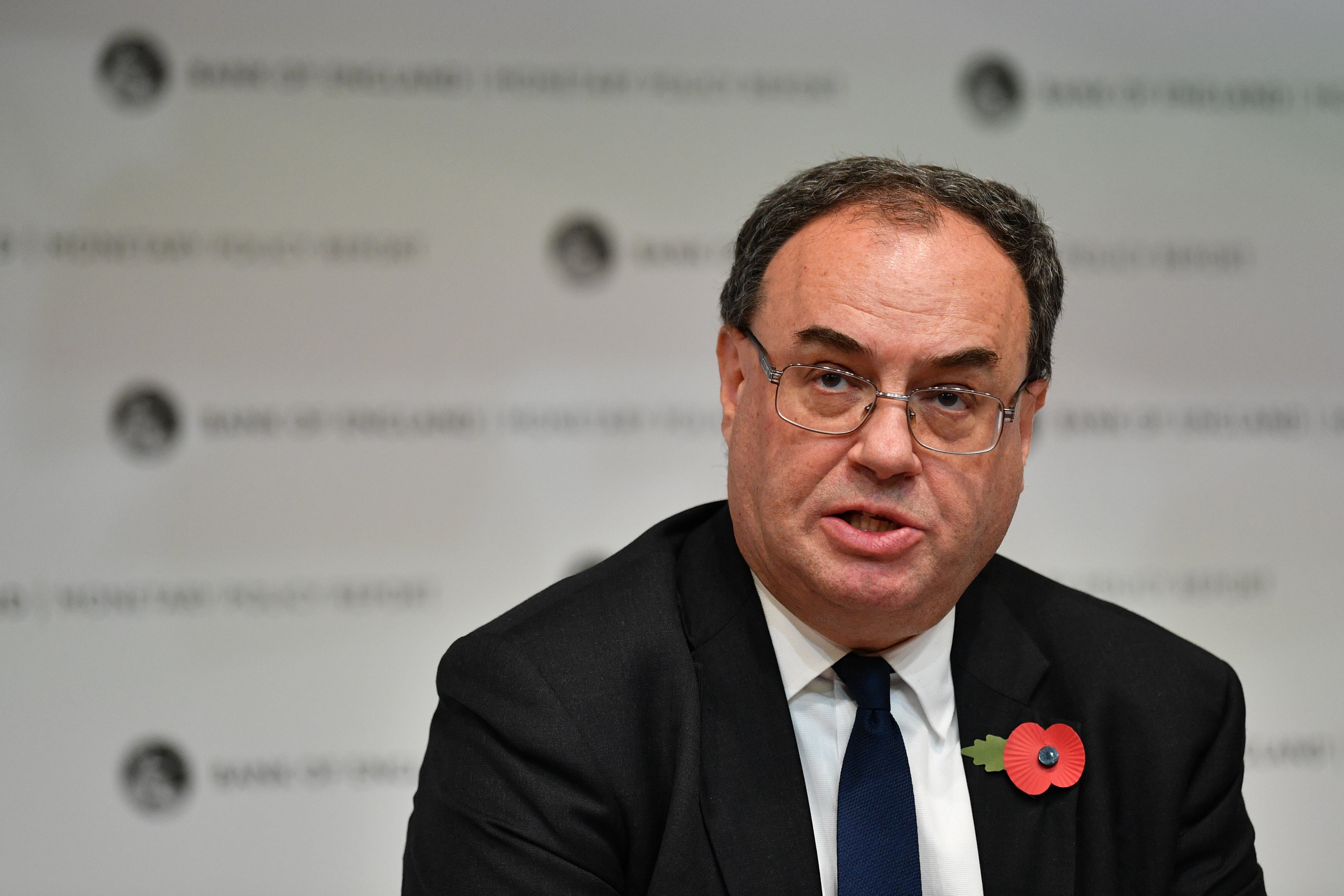Inflation’s climbing, but can the Bank of England fix it?
Prices may be soaring, but sluggish economic growth means a rate hike is unlikely to fix Sunak’s cost-of-living problem, writes Anna Isaac


Inflation is soaring in the UK and politicians are looking to the central bank for a solution.
When Rishi Sunak took to his feet to deliver his Budget last month, he was quick to note that he had written the Bank of England a reminder letter. That’s standard practice when inflation rises above the central bank’s mandate of 2 per cent. But in his speech, Sunak’s emphasis was clear – he had reaffirmed “their remit to achieve low and stable inflation”. He did so with good reason.
Although the government has often been selective in its choice of numbers in order to suggest pay packets have been outstripping inflation, the Office for National Statistics has long-warned that these seem to be distorted by the pandemic’s impact on data.
The ONS’s latest data showed wages rose by an average of 4 per cent last month, compared to October 2020. It’s not the whole story. The ONS’s statisticians have cautioned that the underlying rate of wage growth may be several percentage points lower.
Meanwhile, inflation, as measured by the Consumer Price Index, reached 4.2 per cent in the 12 months to October. Put simply, even using a figure that’s likely artificially boosted by the impact of the pandemic on data shows a clear squeeze on living standards. There’s no hiding behind it now.
Sunak’s suggestion was that there is only so much a chancellor can do, and that the ball is in the central bank’s court. But he has also been quick to say that inflation is a global problem. It is the “key line” for media engagement:
“Many countries are experiencing higher inflation as we recover from Covid,” Sunak said in response to Wednesday’s price growth data.
That is correct. In the US inflation has risen 6.2 per cent in the 12 months to October. Even in the Eurozone, the previously elusive economic force has climbed to 4.1 per cent, matching a previous century-high in July 2008.
Yet there is a fundamental contradiction in Sunak saying the Bank ought to remember its mandate, while also saying price rises are a global phenomenon. The UK’s central bank can only raise domestic interest rates in a bid to curb inflation generated in the UK. It cannot, readily, tackle global price pressures, such as rising demand for gas in Europe driving up the prices that the UK must pay for its energy – one of the biggest drivers for inflation in the latest figures.
Acting alone, the central bank will be unable to fix the problem of a cost-of-living crunch.
This squeeze on wallets has also come amid slowing growth, creating another uncomfortable bind for the central bank. Policymakers at Threadneedle Street’s best– and preferred – tool for containing the rate of price growth is to increase the key lending rate set by the Bank of England. This is presently at a historically low level of 0.1 per cent.
They decided not to raise it at their November meeting, despite market bets based on bullish language from the governor Andrew Bailey and some of his fellow rate-setters. Raising the key interest rate is traditionally a tool used to curb price rises generated by economic growth. It is meant to act as a break, to calm everything down and prevent the economy from overheating and then running out of steam.
Higher interest rates can dampen growth, by making it more expensive for households and businesses to borrow money. On the other hand, high inflation can eat into pay packets and crimp growth by gobbling up disposable incomes and business’ profits.
The Bank of England could find good reasons to avoid a shift in its position in November. Chief among them was it did not have a clear picture of how the labour market had reacted to the end of the furlough scheme.
Now, however, this reasonable excuse of not wishing to fly blind has gone. On Tuesday, figures for pay rolls from the ONS showed that employers had added 160,000 more workers to their payrolls in October, despite the end of pandemic support for employment.
Taking a closer look at the data suggests that there may be greater slack in the labour market than first meets the eye. Economists including the ONS’s own head of economic statistics, Sam Beckett, have noted that many workers could have been serving out notice periods in October, effectively still recorded as employed when they are, in fact, out of a job.
Meanwhile, Samuel Tombs and Gabriella Dickens, both UK economists at Pantheon Macroeconomics, have warned that employees may not be returning to work the same number of hours they had pre-pandemic. Low response rates to ONS’s business surveys, they say, could be hiding a weaker picture. There has also been a cooling in an average (median) of pay-as-you-earn month-to-month pay growth. It fell by 0.2 per cent in October, the first drop since April 2020.
These are the kind of signals that could drive some reluctance among rate setters to hike just yet. And there is another round of employment data due just ahead of their next meeting in December.
Bailey may, as he told MPs on the Common’s Treasury Committee on Monday, be feeling “very uneasy” about inflation. But he and his colleagues might also feel very uneasy about raising rates this December, too.
Even if the central bank does move to increase rates above 0.1 per cent, few economists expect this to make any meaningful impact on the short- and medium-term squeeze on households’ incomes and business profits. But if it does, it might just put the inflation ball back in Sunak’s court.
Join our commenting forum
Join thought-provoking conversations, follow other Independent readers and see their replies
Comments